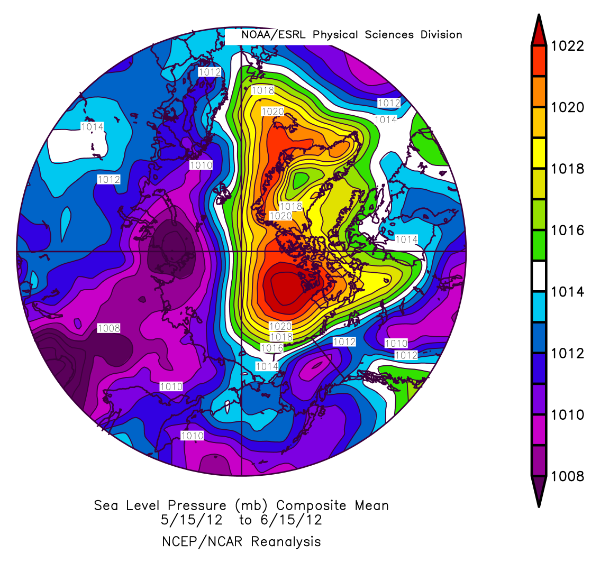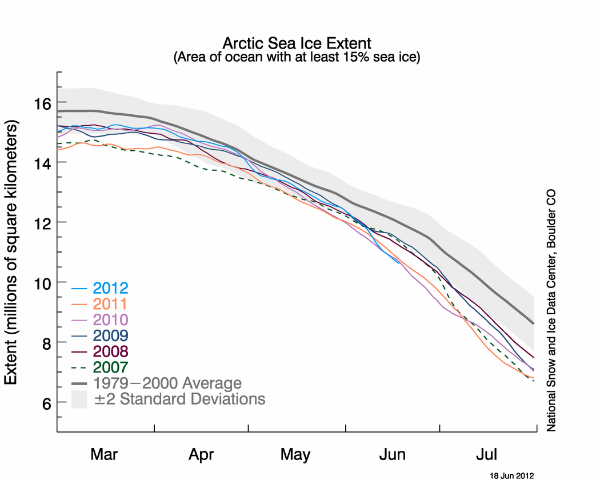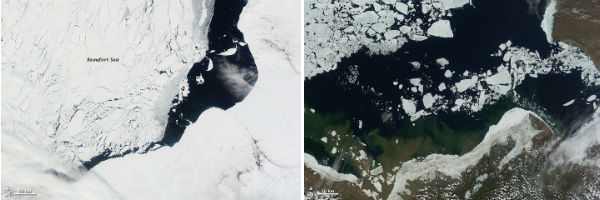Unusual sea ice retreat in the Beaufort Sea

Sea ice retreat in June is typical, as the summer solstice approaches in the Northern Hemisphere with long hours of sunlight to warm the Arctic and melt snow and sea ice. However, the first half of June 2012 brought unusually rapid ice loss.
One area of rapid ice retreat was the Beaufort Sea, north of Alaska. By mid-June, the open-water area off the coast had expanded substantially and snow had melted on land. The rapid melt north of Alaska was part of a larger phenomenon. According to the National Snow and Ice Data Center (NSIDC), sea ice across the entire Arctic reached record-low levels for this time of year, slightly below the previous record set in June 2010. It was also lower than the extent in June 2007, the same year when Arctic sea ice reached its lowest extent ever recorded by satellite in September.

In the first half of June 2012, the Beaufort Sea was a “hotspot” of rapid retreat, driven by a high-pressure pattern over the region that kept skies clear at the very time of year when sunlight lasts the longest. In addition, larger-scale climate patterns in early June 2012 favored ice retreat along the coastlines of Alaska and Siberia. As of June 18, temperatures were above freezing over much of the sea ice in the Arctic, and snow had melted earlier than normal, leading to warming on land.
NSIDC’s report from June 19, 2012 points that recent ice loss rates have been 100,000 to 150,000 square kilometers (38,600 to 57,900 square miles) per day, which is more than double the climatological rate.

The early onset of the spring melt and the sunny skies around the solstice increased the likelihood of heightened melt rates throughout the rest of the summer, largely by reducing albedo: the proportion of solar energy reflected back into space. If an object reflects all the energy it receives, it has an albedo of 1.0. Sea ice has high albedo because of its bright appearance. But when it starts to melt, its albedo drops from roughly 0.9 to 0.7, causing the ice to absorb more energy. Increased energy absorption leads to increased melt, which exposes ocean water. Thanks to its dark appearance, ocean water has an albedo of less than 0.1. Long, sunny days pour energy into the water, and it retains the heat throughout the summer. In September, when the Sun is low on the horizon, the heated ocean water continues melting sea ice.

Source: National Snow and Ice Data Center (NSIDC), Earth Observatory

Strange, I understand that the sea ice in the Beaufort area is currently thicker than has been recorded in previous years and at this moment as is preventing Shell from drilling for oil?
http://www.upstreamonline.com/live/article1257797.ece
[…] ChillyManjaro TheWatchers […]